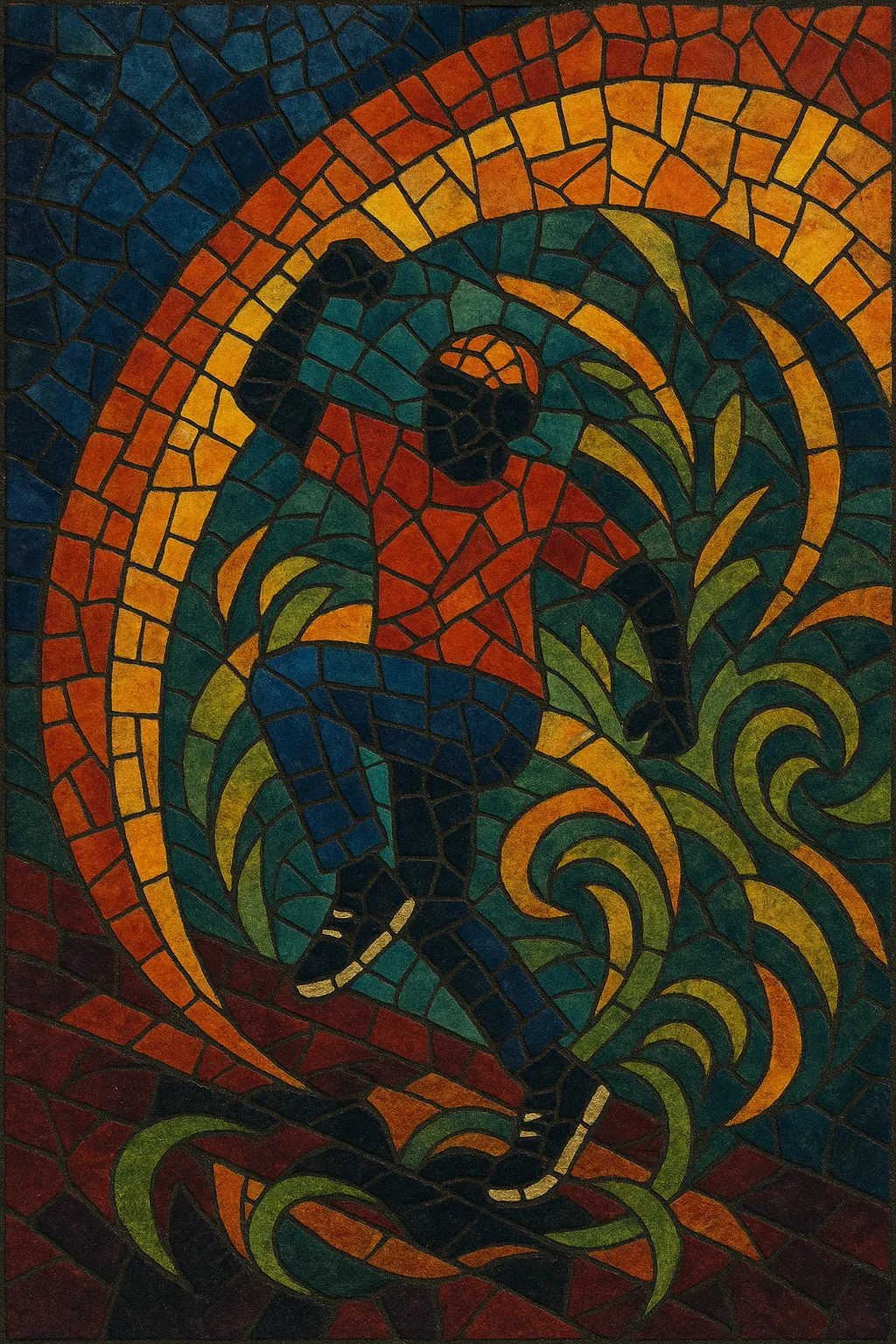Jump up is a high-energy, dancefloor-focused subgenre of drum and bass characterized by bouncy, instantly memorable bass riffs, playful samples, and a party-first attitude.
It typically runs around 170–176 BPM, with crisp two-step drum patterns, punchy snares, and simple, hook-led midrange “wobble” basslines that cut through club systems.
Aesthetically it leans toward bright, cheeky motifs—brass stabs, hip‑hop or dancehall MC phrases, and call‑and‑response bass hooks—designed for rewinds, double drops, and big crowd reactions.
While rooted in jungle’s breakbeats and sound system culture, jump up pares back complexity for maximum bounce and impact, prioritizing groove, movement, and memorable motifs over intricate harmony.
Jump up emerged in the United Kingdom in the mid-1990s as a playful, hook-driven offshoot of jungle and early drum and bass. Producers adapted jungle’s breakbeat foundations toward ultra-catchy bass riffs and dancefloor immediacy. Early touchstones include DJ Zinc’s “Super Sharp Shooter” (1995) and releases on labels like Ganja Records/Urban Takeover, which fused ragga and hip‑hop sampling with rubbery, singable basslines.
By 1997–1999, jump up had a strong club presence, powered by DJs such as DJ Hype and Aphrodite. Its popularity also triggered a counter-movement toward darker, more technical styles (techstep and neuro-leaning sounds), and detractors sometimes used the term “clownstep” in the early 2000s to mock the wobblier, cartoonish end of the spectrum. Despite that, jump up’s core formula—simple, memorable bass hooks over hard-hitting breaks—remained a reliable tool for rocking dancefloors.
A mid‑2000s resurgence, marked by anthems like DJ Hazard & D Minds’ “Mr Happy” (2007), re‑centered jump up as a festival and club staple. In the 2010s, a new wave of producers (e.g., Macky Gee, Sub Zero, Annix, Original Sin, DJ Guv, Serum) pushed a cleaner, more engineered sound, optimizing for big rigs and punchy midrange dynamics. Continental Europe (especially Belgium, Czech Republic, and France) became key hubs alongside the UK, with massive events helping cement the style’s longevity.
Jump up’s essence lies in its crowd-pleasing functionality: DJ‑friendly intros/outros, big single-note or two-note hooks, bold midrange bass design, and MC-led hype in clubs. The style preserves jungle’s sound system spirit—rewinds, call‑and‑response, and tactile bass pressure—while favoring minimalist harmony and maximal groove.


